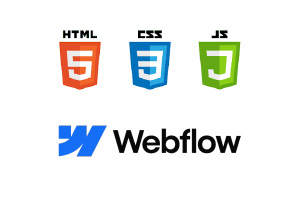Coding vs Convenience: A Portfolio Experiment

I built my portfolio twice—once with HTML, CSS, and JavaScript, and again using Webflow. This project explores the differences between coding a website from scratch and using a no-code website builder, comparing design flexibility, performance, cost, and overall experience.
Project Goals
The goal was to test the strengths and weaknesses of coding a website versus using Webflow. I wanted to compare creative control, efficiency, and performance to see which approach worked best.
Approach
- Version 1 - Coded Portfolio: Built from scratch with HTML, CSS, and JavaScript.
- Version 2 - Webflow Portfolio: Built using Webflow’s visual editor and CMS tools.
- Both versions were compared based on design flexibility, ease of use, time required, and overall effectiveness.
Key Findings
- The coded portfolio provided full control over design, better performance, and a more unique final product.
- The Webflow version was much faster to set up, but template limitations made deep customization more difficult.
- Hand-coding took significantly more time, but it allowed for complete personalization without platform restrictions.
- Webflow was great for speed and ease of use, but costs and platform constraints were a downside.
Final Thoughts
Both approaches have their advantages. If you need full creative control and optimization, coding from scratch is worth it. If you need a fast and manageable website with less technical effort, Webflow is a great alternative. The choice depends on the project, timeline, and how much customization you need.